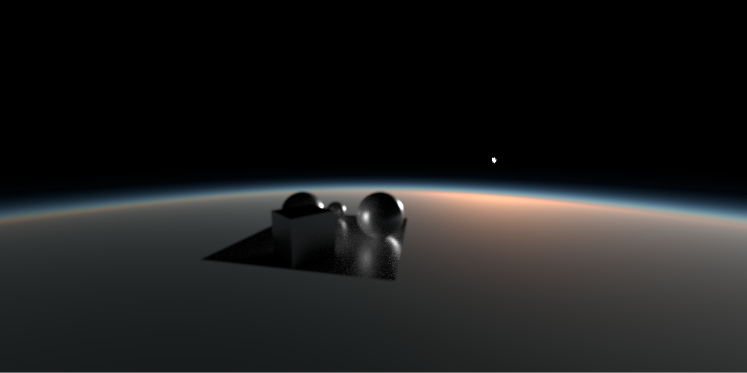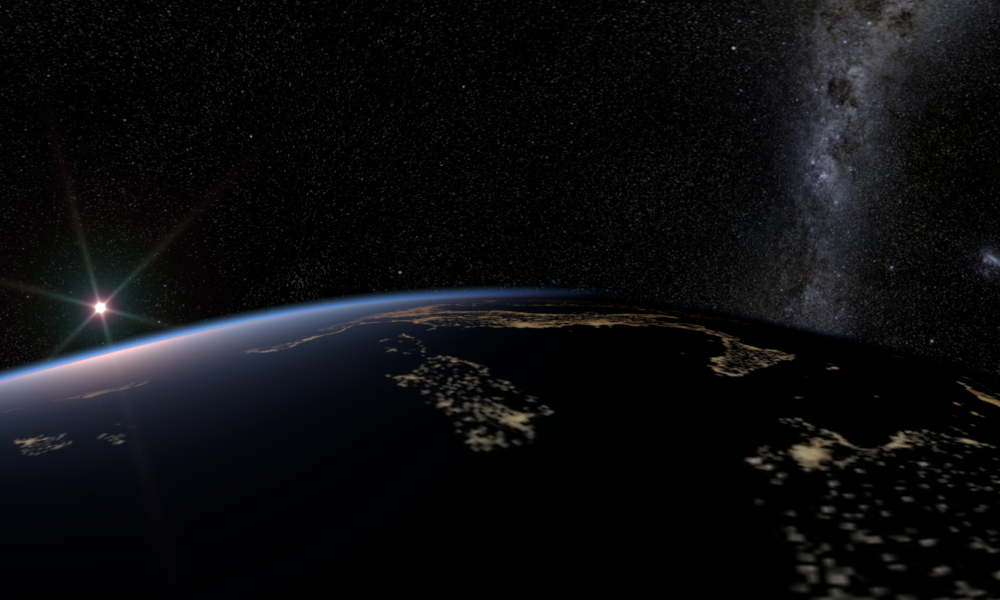
The Planetary environment is a flexible Nishita Sky model. It is useful when rendering scenes seen from outer space. For its effects to be visible, the camera has to have a very high altitude as it moves out into outer space to view the expansive horizon of the planetary body. It takes into account the conditions within and beyond the atmosphere of a planetary body (like Earth) and its surroundings in space. Instead of a single ground color and a sky or sunset color, there is a planetary surface that reflects and emits light. This node extends the environment's medium (volume rendering and subsurface scattering) with an atmospheric scattering through the planetary body's atmosphere. Here, the atmosphere is perceived as a layer of gas surrounding a planetary mass. It is held in place because of gravity, so as the light travels into atmosphere either from the outer layer to the ground or from a light source within the atmosphere, then the atmosphere's density is sampled along the ray at regular intervals, resulting in an amount of scattering based on the atmosphere's density. This atmospheric scattering is based on the Nishita Sky model, which displays the variations of color that are optical effects caused by the particles in the atmosphere.
This environment is not connected to the camera, and this allows you to zoom the camera view of the objects in and out of the scene without affecting the position of the environment in the scene. It gathers optical depth (transmittance) from the sun position, so if the sun position is greater than 0.0f on the y-axis (upward direction), then it will be colored. If you put it below horizon (i.e. sun position less than 0.0f on the t-axis), then it won't gather transmittance, making it invisible.

Figure 1: Image rendered using the Planetary Environment with the camera set at a very high altitude
Altitude
The camera's altitude. Set this to a very high value in order to view the expansive horizon of the planetary body.
Star Field
Texture to convey star fields behind the planet.
Latitude
The latitude coordinate of the camera's current position.
Longitude
The longitude coordinate of the camera's current position.
Ground Albedo
The surface texture map on the planet.
Ground Reflection
The specular texture map on the planet.
Ground Glossiness
The planetary glossiness.
Ground Emission
The surface texture map on the planet at nighttime.
Ground Normal Map
Normal map on the planet.
Ground Elevation
Elevation map on the planet.

Figure 2: Image rendered using the Planetary environment with a starfield